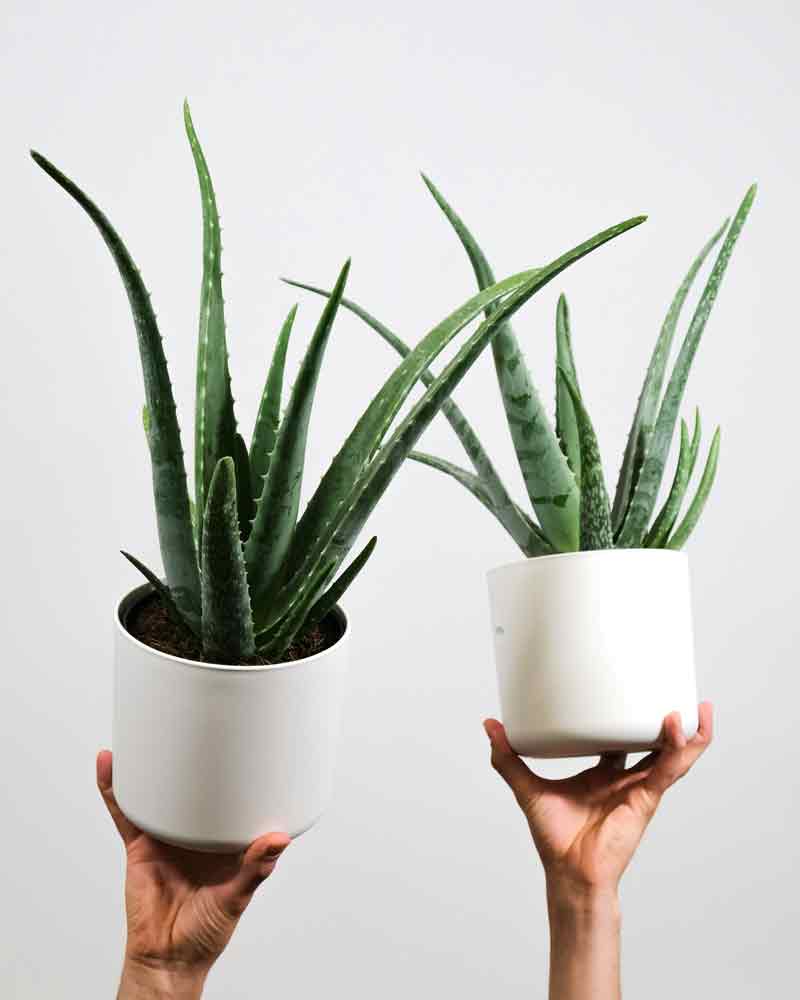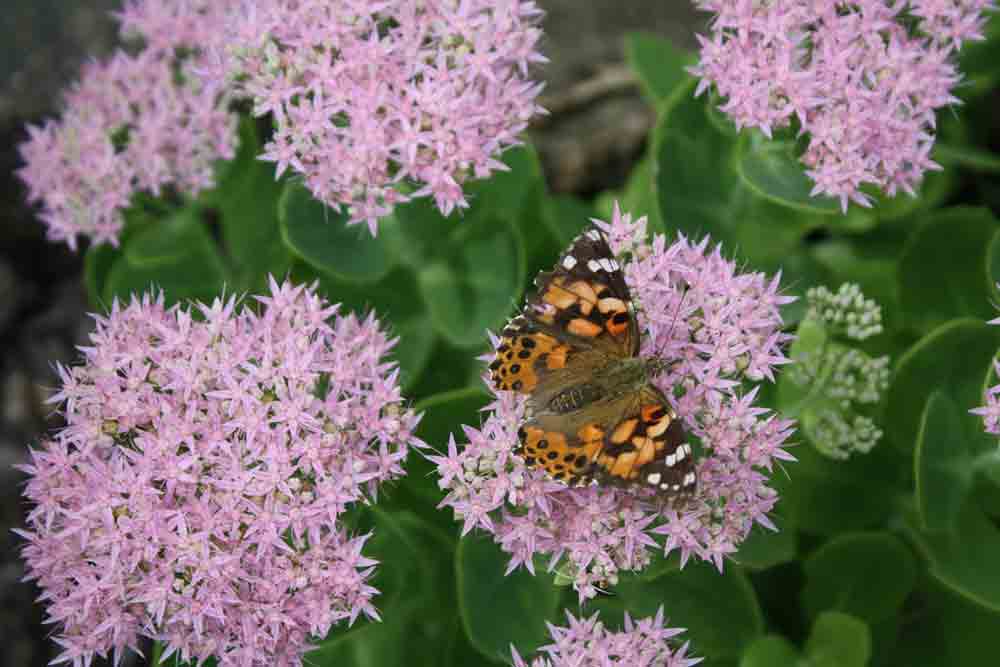Envíos a toda la Unión Europea ![]() de Rumania
de Rumania ![]()
- 17 de noviembre de 2024
10 suculentas de fácil cuidado para principiantes
-
por Oana
Resumen de contenidos
Introducción:
Las suculentas son las plantas perfectas para los jardineros principiantes, gracias a que requieren poco mantenimiento y su apariencia llamativa. Ya sea que esté buscando plantas verdes para interiores o plantas resistentes para exteriores, estas Suculentas de fácil cuidado Son fáciles de cultivar y añaden un toque de naturaleza a tu espacio. Sigue leyendo para descubrir las Las mejores suculentas para principiantes y consejos para mantenerlos prósperos.
1. Aloe Vera

- Famosa por sus propiedades medicinales, la sábila es una suculenta de fácil cuidado que prospera incluso si se la descuida. Solo hay que colocarla en un lugar luminoso y regarla con moderación.
- Punto brillante requerido: Si bien tolera poca luz, el aloe vera crece mejor con luz solar indirecta y brillante. Demasiada luz directa puede quemar sus hojas.
- Necesidades mínimas de alimentación: Fertilice con un fertilizante suculento solo una o dos veces al año durante la temporada de crecimiento (primavera y verano).
- Uso medicinal: Utilice siempre hojas maduras de Aloe Vera para la extracción de gel, ya que las hojas más jóvenes pueden carecer de potencia.
2. Echeveria
- La Echeveria, conocida por sus hojas en forma de roseta, viene en varios colores, tamaños y texturas, lo que la convierte en una de las favoritas entre los principiantes. Estas suculentas son perfectas para agregar un toque de elegancia a su jardín interior o exterior.
- Variedades populares de Echeveria:
- Echeveria Elegans (Bola de nieve mexicana): Una opción clásica con rosetas de color verde azulado pálido y bordes teñidos de rosa.
- Echeveria Perle de Nuremberg: Una variedad sorprendente con hojas de color rosa púrpura que desarrollan colores más intensos con luz brillante.
- Echeveria Agavoides (Lápiz labial Echeveria): Reconocible por sus hojas verdes triangulares con bordes rojos vibrantes.
- Echeveria Príncipe Negro: Una suculenta espectacular con rosetas oscuras, casi negras, que contrastan maravillosamente con plantas más claras.
- Echeveria Croma: Una variedad multicolor que cambia entre tonos de rosa, naranja, verde y morado según la iluminación.

3. Planta de jade (Crassula Ovata)

- Con sus hojas gruesas y brillantes, la planta de jade es una suculenta clásica de interior que es increíblemente fácil de cuidar. Crece lentamente y puede vivir durante décadas, lo que la convierte en una excelente inversión para su colección de plantas.
- Característica de crecimiento única:
- Aspecto natural del bonsái: A medida que la planta de jade madura, su tallo se engrosa y se endurece, asemejándose al tronco de un árbol. Esta característica la convierte en una opción popular para creaciones artísticas de estilo bonsái.
- Muchos entusiastas podan y dan forma a las plantas de jade convirtiéndolas en árboles en miniatura, mejorando su atractivo estético y creando impresionantes exhibiciones de bonsáis.
- Con el tiempo, la planta desarrolla una base leñosa y un patrón de ramificación, lo que aumenta su encanto y longevidad.
Consejos adicionales:
- Símbolo de prosperidad: En muchas culturas, la planta de jade se considera un símbolo de buena suerte y prosperidad, y a menudo se coloca cerca de entradas o ventanas.
4. Planta serpiente (Sansevieria)
- La planta serpiente, también conocida como La lengua de la suegra, es una de las plantas de interior más resistentes. Es conocida por sus hojas erguidas con forma de espada que se presentan en varios patrones y tonos de verde.
- Purificador de aire: Las plantas serpiente son excelentes para mejorar la calidad del aire. Absorben toxinas como el formaldehído y el benceno e incluso liberan oxígeno por la noche, lo que las convierte en plantas ideales para el dormitorio.
- Variedades para probar:
- Sansevieria Trifasciata Laurentii: Reconocida por sus hojas con bordes amarillos.
- Sansevieria Moonshine: Presenta hojas de color verde plateado para una apariencia moderna.
- Sansevieria cilíndrica: Única con hojas cilíndricas en forma de espiga.
- Campeón de poca luz: Las plantas de serpiente pueden sobrevivir en áreas con poca luz, pero crecen mejor con luz solar indirecta y brillante.

5. Sedum (sedum)

- Los sedums, comúnmente llamados siemprevivas, son un grupo versátil de suculentas que prosperan en diversas condiciones. Son conocidos por sus hojas pequeñas y carnosas y su capacidad para formar racimos verticales o cubiertas vegetales extensas.
- Consejo de cuidado: Prefieren pleno sol para mantener su apariencia compacta.
- Perfecto para exteriores: Los sedums son resistentes y a menudo se utilizan en jardines de rocas, techos verdes y xerojardinería debido a su tolerancia a la sequía.
- Variedades para explorar:
- Sedum Alegría de otoño: Sedum alto y erguido con flores rosas que atraen a los polinizadores.
- Sedum Reflexum (Picea azul): Se asemeja a las agujas de abeto, perfecto para cubrir el suelo.
- Sedum Rubrotinctum (planta de gominola): Tiene hojas coloridas en forma de gominolas.
- Imán para polinizadores: Muchos sedums producen racimos de flores en forma de estrella que atraen abejas y mariposas.
6. Haworthia
- Las haworthias son suculentas pequeñas y encantadoras conocidas por su forma de roseta y sus llamativos patrones de hojas. Están estrechamente relacionadas con el aloe, pero son más pequeñas y compactas.
- Variedades para probar:
- Haworthia Fasciata (Planta Cebra): Reconocible por sus hojas rayadas.
- Haworthia Cooperi: Presenta hojas translúcidas en forma de burbujas.
- Haworthia retusa: Tiene hojas planas y triangulares que se asemejan a una estrella.
- Ideal para espacios pequeños: Su tamaño compacto los hace perfectos para escritorios, alféizares de ventanas o jardineras pequeñas.
- Tolerante a la sombra: A diferencia de muchas suculentas, las Haworthias pueden tolerar condiciones de luz bajas a medias.

7. Kalanchoe tomentosa (panda)

- La planta Panda es una suculenta única con hojas aterciopeladas de color verde plateado con bordes de color marrón rojizo. Su textura suave y peluda la convierte en una de las favoritas de los amantes de las plantas.
- Atractivo táctil: Las hojas peludas no sólo son atractivas sino que también ayudan a la planta a retener la humedad en ambientes secos.
- Precauciones para mascotas: Si bien es hermosa, la planta panda es tóxica para las mascotas, así que manténgala fuera del alcance de los gatos y los perros.
- Belleza duradera: Con un cuidado mínimo, esta planta puede vivir muchos años, creciendo gradualmente en altura y ramificándose.
8. Collar de perlas (Senecio Rowleyanus)
- El String of Pearls, una suculenta rastrera con hojas en forma de cuentas, es una planta sorprendente que agrega un efecto caprichoso y en cascada a estantes o jardineras colgantes.
- Bono de floración: String of Pearls puede producir pequeñas flores blancas con aroma a canela en las condiciones adecuadas.
- Propagación fácil: Corta una hebra, colócala sobre la tierra y observa cómo enraíza rápidamente para crear nuevas plantas.

9. Cadena de corazones (Ceropegia woodii)

- El Cadena de corazones, también conocido como el Vid del rosario o Cadena de corazonesEs una hermosa planta rastrera apreciada por sus delicadas hojas en forma de corazón y sus enredaderas en cascada. Originaria de Sudáfrica, es una semisuculenta que prospera con un cuidado mínimo, lo que la hace perfecta tanto para principiantes como para amantes de las plantas experimentados.
- Hojas: Hojas pequeñas en forma de corazón con un patrón jaspeado de color verde plateado. El envés de las hojas suele presentar un tono rosado o morado.
- Vides: Enredaderas delgadas y rastreras que pueden crecer hasta 3 a 6 pies de largo, creando un impresionante efecto de cascada en macetas colgantes.
- Flores: Produce diminutas flores tubulares en tonos púrpura o rosa, que se asemejan a pequeñas linternas.
10. Cola de Burro (Sedum Morganianum)
- Con sus tallos en cascada de hojas verdes y regordetas, Burro's Tail es una suculenta ideal para principiantes que prospera en cestas colgantes o jardineras elevadas.
- Consejo de cuidado: Manipular con cuidado para evitar romper sus delicadas hojas.
- Mejor pantalla: Colóquelo en una maceta colgante donde sus tallos largos y colgantes puedan crecer sin obstrucciones.
- Bajo mantenimiento: Es tolerante a la sequía y necesita un cuidado mínimo, prosperando con luz solar indirecta y brillante.
- Variedades populares:
- Burrito de sedum: Hojas más pequeñas y compactas que las de la Cola de Burro estándar.
- Crecimiento lento: Aunque crece lentamente, la paciencia se ve recompensada con un follaje exuberante y en cascada.

Artículos Relacionados
suculentas coreanas
¿Quieres estar al día con nuestro blog?
¡Obtenga nuestros consejos más valiosos directamente en su bandeja de entrada, una vez al mes!
sucuboblasto
Echa un vistazo a nuestras redes sociales
